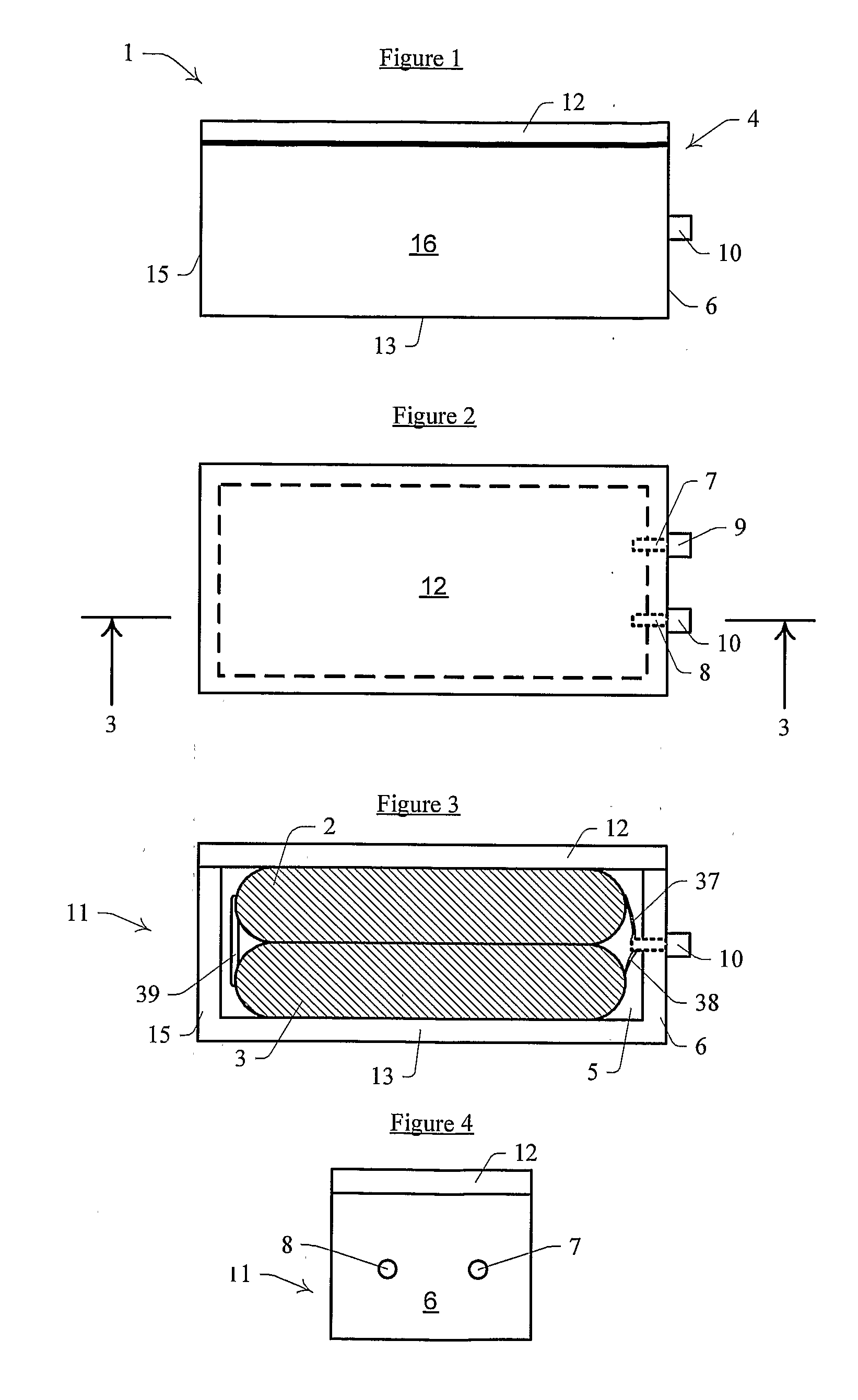Package for an Electrical Device
a technology for electrical devices and packaging, applied in the field of packaging, can solve the problems of known packaging being susceptible to compromising the reliable performance and operational life of supercapacitive elements, and achieve the effect of high compressive forces
- Summary
- Abstract
- Description
- Claims
- Application Information
AI Technical Summary
Benefits of technology
Problems solved by technology
Method used
Image
Examples
example 1
Forming an Hermetic LCP Package
[0342]A 3 mm thick sheet of laminated LCP including alternate sheets of Ultralam® 3850 and Ultralam® 3908 is machined into a 28×20×3 mm open topped housing with a continuous abutment surface about the opening. The internal dimensions of the housing are about 24×16×2 mm. Two like housings are opposed such that the abutment surfaces are presented to each other and then heat sealed together with a 50 μm layer of Ultralam® 3908 captured between them. The seal is created by heating the opposed housings to 290° C. for 30 minutes with a spacer in the heating jaws to prevent over-compression. The package thus formed is cooled to 80° C. before removal from the heat sealer.
example 2
Forming an Hermetic LCP Package
[0343]A 3 mm thick sheet of laminated LCP including alternating sheets of Ultralam® 3850 and Ultralam® 3908 is machined into 28×20×3 mm housing similarly to Example 1. However, the abutment surface is defined by a lip surrounding the open top, where the lip is about 5 mm wide by about 1 mm thick. This provides for maximum external dimensions of about 38×30×3 mm. Two like housings are opposed and heat sealed together with a 50 μm layer of Ultralam® 3908 captured between them. The seal is created by heating the housings to 290° C. for 30 minutes with a spacer in the heating jaws to prevent over-compression. The package thus formed is cooled to 80° C. before removal from the heat sealer.
example 3
Testing the Hermeticity of an LCP Package
[0344]Packages as formed in Examples 1 and 2 were pierced by drilling a 0.5 mm diameter hole through the body of the package into the internal cavity. The cavity was filled with about 0.7 ml of either pure water or dry acetonitrile and the hole sealed by melting a small plug of LCP. The filled packages were then tested for hermeticity by heating to 70° C. and measuring weight loss over several weeks. No weight loss was detectable, verifying that the package thus formed has a permeability of less than 1×10−13 cm3.cm / cm2 / s / Pa for water vapour and less than 1×10−10 cm3.cm / cm2 / s for liquid acetonitrile.
PUM
| Property | Measurement | Unit |
|---|---|---|
| operating voltages | aaaaa | aaaaa |
| thickness | aaaaa | aaaaa |
| thickness | aaaaa | aaaaa |
Abstract
Description
Claims
Application Information
 Login to View More
Login to View More - R&D
- Intellectual Property
- Life Sciences
- Materials
- Tech Scout
- Unparalleled Data Quality
- Higher Quality Content
- 60% Fewer Hallucinations
Browse by: Latest US Patents, China's latest patents, Technical Efficacy Thesaurus, Application Domain, Technology Topic, Popular Technical Reports.
© 2025 PatSnap. All rights reserved.Legal|Privacy policy|Modern Slavery Act Transparency Statement|Sitemap|About US| Contact US: help@patsnap.com



